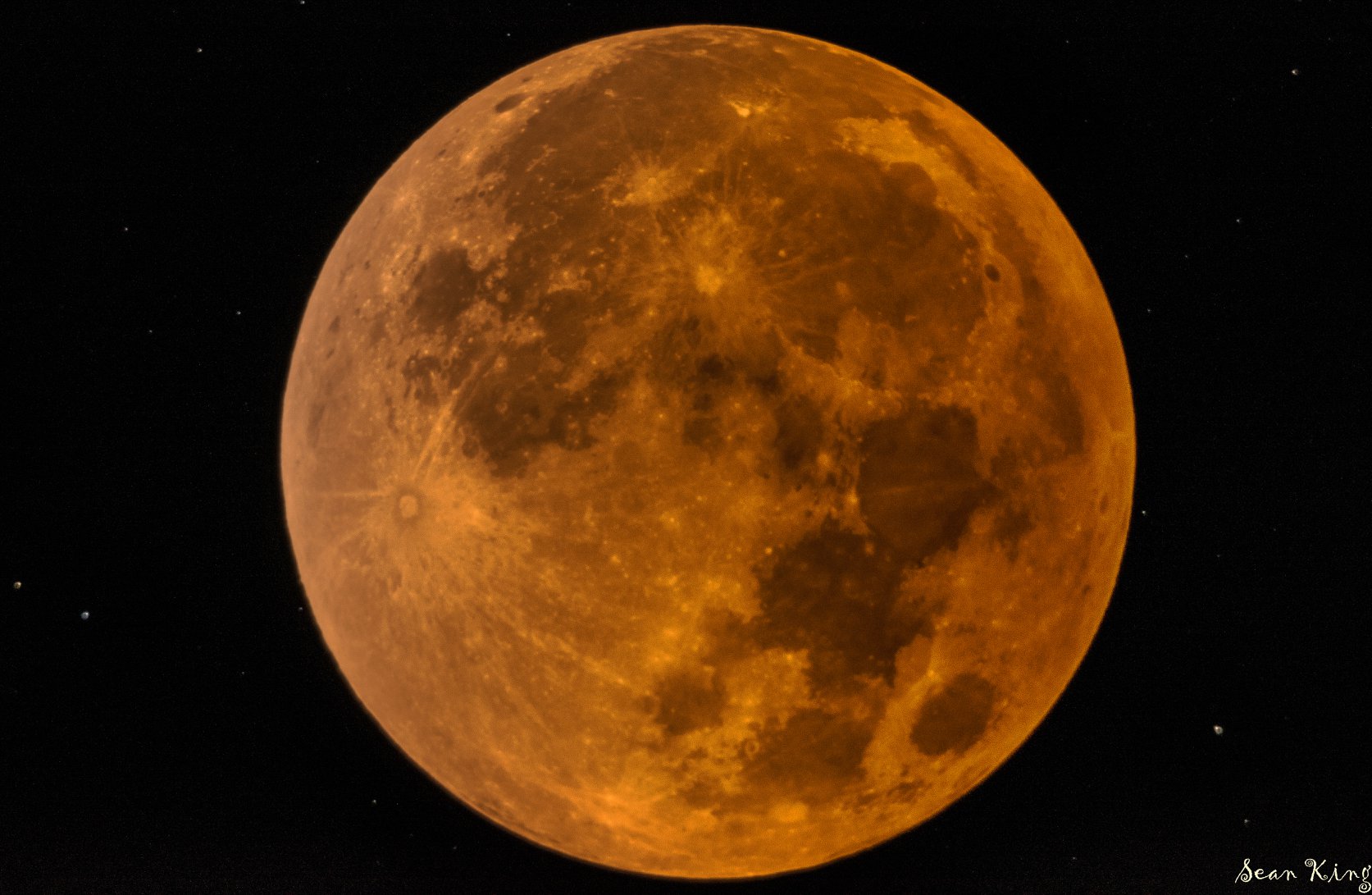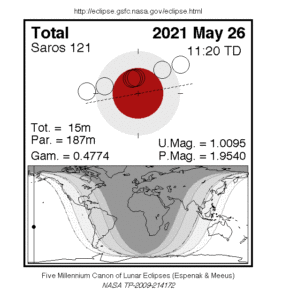
Photograph: Sean King /Facebook
On the same day a geomagnetic storm is due to strike Earth, a spectacular lunar eclipse will grace the night /morning skies across a large part of the world Wednesday morning, bringing with it many names. “Blood Moon”, “Super Moon”, “Flower Moon”, and many other adjectives are being used to describe this site. On Wednesday at 7:11 am ET / 4:11am PT / 1:11 am HT, the Sun, the Moon, and the Earth will align creating a unique total lunar eclipse. The full moon will also be at its closest point to Earth in its orbit, called perigee. While at perigee, the Moon appears slightly bigger and brighter from our perspective on Earth, so it’s often referred to as a “Super” moon. In May, the full moon is also sometimes known as the “Flower” Moon. And in portions of the U.S. where a total lunar eclipse is visible, the moon will turn a rich blood-like red, hence the long name for this event. The entire eclipse will only last approximately 15 minutes.

A lunar eclipse occurs when the Moon passes directly behind Earth and into its shadow. This can occur only when the Sun, Earth, and Moon are exactly or very closely aligned, with Earth between the other two. A lunar eclipse can occur only on the night of a full moon. Unlike a solar eclipse in which its dangerous to stare at the sun, there is no danger associated with watching a lunar eclipse at night. As such, no special eclipse glasses are required to safely watch the Moon.
Another lunar eclipse arrives November 18/19, however, it won’t be a complete total eclipse like this one.
As long as Mother Nature cooperates with clear skies, most of the U.S. will be able to see at least part of the eclipse, with the U.S. western states in line for some of the better views. But the best view in the U.S. will be in Hawaii, where the true blood-red view of the Moon will become visible.
Why will the eclipsed Moon appear red in Hawaii? During a total lunar eclipse, Earth completely blocks direct sunlight from reaching the Moon. The only light reflected from the lunar surface has been refracted by Earth’s atmosphere. This light appears reddish for the same reason that a sunset or sunrise does: the Rayleigh scattering of bluer light. Rayleigh scattering refers to the scattering of light off of the molecules of the air, and can be extended to scattering from particles up to about a tenth of the wavelength of the light. It is Rayleigh scattering off the molecules of the air which provides a typical blue sky.